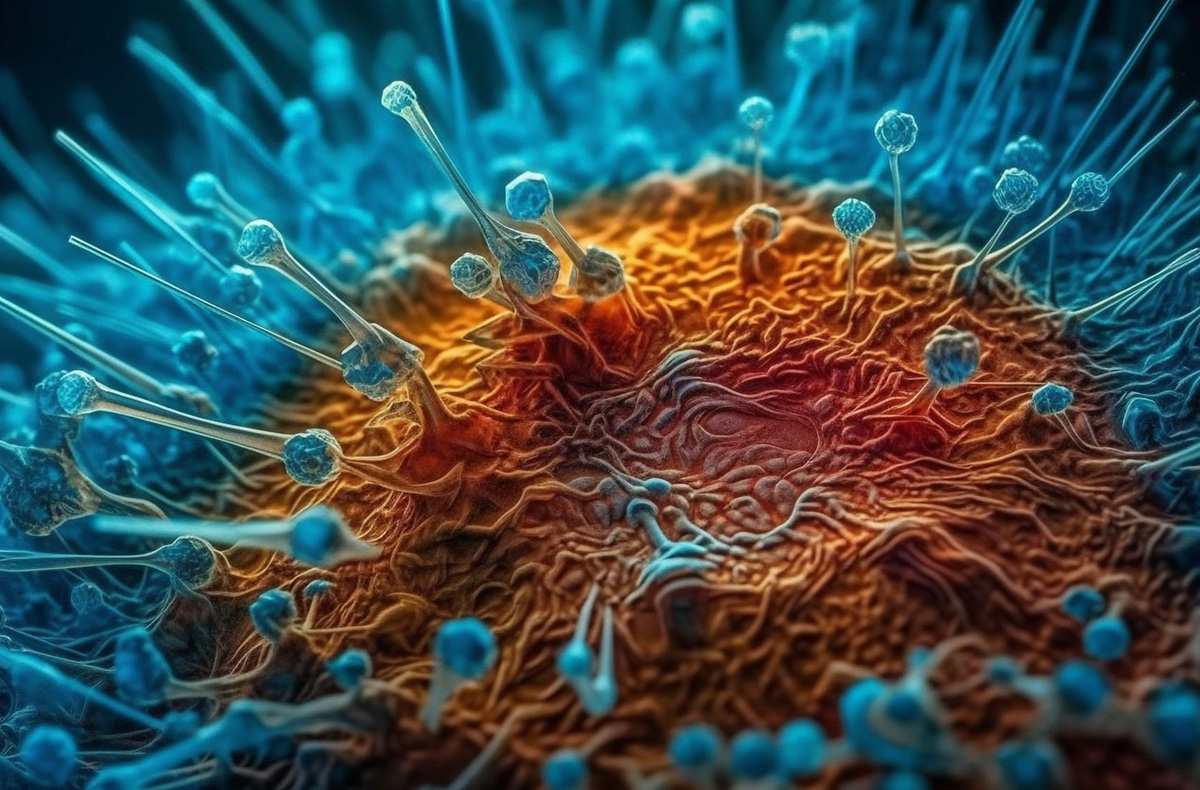Le système immunitaire est omniprésent dans l'organisme. Il est composé de molécules solubles, réparties dans les liquides de l'organisme (sang, lymphe, liquide extracellulaire, etc.) :
- Les protéines du complément
- Les anticorps
- peptides antimicrobiens
- Les cytokines
- Les amines telles que l'histamine
- etc.
Un autre de ses composants est constitué de cellules immunitaires, telles que :
- Les neutrophiles
- Les lymphocytes B et T
- Les éosinophiles et basophiles
- Les mastocytes
- Les monocytes et les macrophages
- Les cellules dendritiques
- Les cellules tueuses naturelles
- Les cellules microgliales
Ces cellules se trouvent non seulement dans certains tissus et organes lymphoïdes tels que la rate, le thymus, les ganglions lymphatiques, la moelle osseuse et le tissu lymphoïde associé aux muqueuses (MALT), mais aussi dans tous nos fluides, tissus et organes, où elles remplissent toutes les fonctions susmentionnées.
Je n'entrerai pas dans les détails du fonctionnement du système immunitaire face à l'infection, mais nous pouvons dire que la réponse immunitaire à l'agression des micro-organismes se divise en une réponse immunitaire innée et une réponse immunitaire adaptative. La première est une réponse médiée par la plupart des cellules immunitaires, à l'exception des lymphocytes, qui détruisent les micro-organismes envahisseurs par différents mécanismes, bien qu'ils laissent dans leur sillage une réaction inflammatoire importante qui cause des "dommages collatéraux" aux tissus. La seconde est une réponse immunitaire beaucoup plus spécifique qui possède une mémoire. Si notre organisme a déjà été attaqué par un micro-organisme, les lymphocytes auront "pris note" de quel germe il s'agissait et auront produit des anticorps spécifiques. Cela prendra un certain temps la première fois, mais lors d'une nouvelle exposition, ces anticorps reconnaîtront immédiatement l'agent incriminé et déclencheront une réponse beaucoup plus spécifique et efficace à l'entrée.
Bibliografía:
Arponen S (2021). Es la microbiota, idiota. Alienta.
Godaly G, Ambite I, Svanborg C. Innate immunity and genetic determinants of urinary tract infection susceptibility. Curr Opin Infect Dis. 2015 Feb;28(1):88-96.
Lacerda Mariano L, Ingersoll MA. Bladder resident macrophages: Mucosal sentinels. Cell Immunol. 2018 Aug;330:136-141.
Song J, Abraham SN. TLR-mediated immune responses in the urinary tract. Curr Opin Microbiol. 2008 Feb;11(1):66-73.
Becknell B, Ching C, Spencer JD. The Responses of the Ribonuclease A Superfamily to Urinary Tract Infection. Front Immunol. 2019 Nov 29;10:2786.
Steigedal M, Marstad A, Haug M, Damås JK, Strong RK, et al. Lipocalin 2 imparts selective pressure on bacterial growth in the bladder and is elevated in women with urinary tract infection. J Immunol. 2014 Dec 15;193(12):6081-9.
Ueda N, Kondo M, Takezawa K, Kiuchi H, Sekii Y, et al. Bladder urothelium converts bacterial lipopolysaccharide information into neural signaling via an ATP-mediated pathway to enhance the micturition reflex for rapid defense. Sci Rep. 2020 Dec 3;10(1):21167.
Hayes BW, Abraham SN. Innate Immune Responses to Bladder Infection. Microbiol Spectr. 2016 Dec;4(6):10.1128/microbiolspec.UTI-0024-2016.
O’Brien VP, Hannan TJ, Schaeffer AJ, Hultgren SJ. Are you experienced? Understanding bladder innate immunity in the context of recurrent urinary tract infection. Curr Opin Infect Dis. 2015 Feb;28(1):97-105.
Huang J, Fu L, Huang J, Zhao J, Zhang X, et al. Group 3 Innate Lymphoid Cells Protect the Host from the Uropathogenic Escherichia coli Infection in the Bladder. Adv Sci (Weinh). 2022 Feb;9(6):e2103303.
Wu J, Abraham SN. The Roles of T cells in Bladder Pathologies. Trends Immunol. 2021 Mar;42(3):248-260.
Billips BK, Schaeffer AJ, Klumpp DJ. Molecular basis of uropathogenic Escherichia coli evasion of the innate immune response in the bladder. Infect Immun. 2008 Sep;76(9):3891-900.
Nielsen KL, Stegger M, Kiil K, Godfrey PA, Feldgarden M, Lilje B, Andersen PS, Frimodt-Møller N. Whole-genome comparison of urinary pathogenic Escherichia coli and faecal isolates of UTI patients and healthy controls. Int J Med Microbiol. 2017 Dec;307(8):497-507.
Ambite I, Butler D, Wan MLY, Rosenblad T, Tran TH, Chao SM, Svanborg C. Molecular determinants of disease severity in urinary tract infection. Nat Rev Urol. 2021 Aug;18(8):468-486.
Ziegler T, Jacobsohn N, Fünfstück R. Correlation between blood group phenotype and virulence properties of Escherichia coli in patients with chronic urinary tract infection. Int J Antimicrob Agents. 2004 Sep;24 Suppl 1:S70-5.
Sulaiman KA, Al Qahtani N, Al Muqrin M, Al Dossari M, Al Wabel A, et al. The correlation between non-O blood group type and recurrent catheter-associated urinary tract infections in critically ill patients: A retrospective study. J Int Med Res. 2022 Jul;50(7):3000605221108082.
Albracht CD, Hreha TN, Hunstad DA. Sex effects in pyelonephritis. Pediatr Nephrol. 2021 Mar;36(3):507-515.
Wnorowska U, Piktel E, Deptuła P, Wollny T, Król G, et al. Ceragenin CSA-13 displays high antibacterial efficiency in a mouse model of urinary tract infection. Sci Rep. 2022 Nov 10;12(1):19164.


